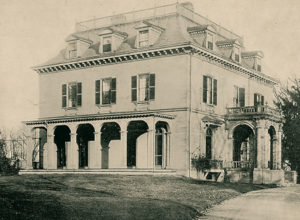Our History
A Foundation of Faith

The history of Eastern Nazarene College began when several ministers and laypersons decided to establish a Christian collegiate institute in the city of Saratoga Springs, New York. The founders had a remarkably ambitious vision: in an age when most Christian educational institutions began as Bible colleges and missionary training schools, their goal was to establish an integrated preparatory academy, liberal arts college, and theological seminary. With a sound academic foundation, the school opened its doors as a fully accredited institution on September 25, 1900. Not long after, the Institute was relocated to the small village of North Scituate, Rhode Island, and became one of the first three schools to be officially supported by the Church of the Nazarene. On June 14, 1918, Eastern Nazarene College was chartered as a liberal arts college with degree-granting authority in the state of Rhode Island. It had been resolved that the college curriculum be reinvigorated and the name of the Institute changed to reflect both its evolving religious identity and its goal of providing a liberal arts education. Nazarene College of the Northeast, Nazarene College, and Bresee Theological Institute (named for Phineas Bresee) were just a few of the names considered. Ultimately, Eastern Nazarene College was selected.
Under the Eaves of Harvard

The founders decided to relocate the college to Massachusetts because the educational standards and requirements were the most rigorous in the nation. In 1919, Eastern Nazarene College purchased the old summer home of Boston mayor Josiah Quincy, Jr. and moved to Wollaston Park, approximately a quarter-mile from Quincy Bay and Wollaston Beach. Bertha Munro, the first Dean of the College, was thrilled at the prospect of establishing a Christian college “under the eaves of Harvard” and immediately began drafting a new college curriculum. By 1920, the school established a solid reputation as a Christian liberal arts college in New England. Its status as an institution of higher learning became increasingly enviable over the next several decades, as the College instituted its first graduate degree program, gained accreditation from the New England Association of Schools and Colleges, and joined the Association of American Colleges. In 1955, a new era began when the College decided to commit itself entirely to higher education. Over the next several decades, it expanded its bachelor’s degree programs, introduced graduate programs, and offered accelerated degrees at satellite campuses to accommodate the needs of working adults.



